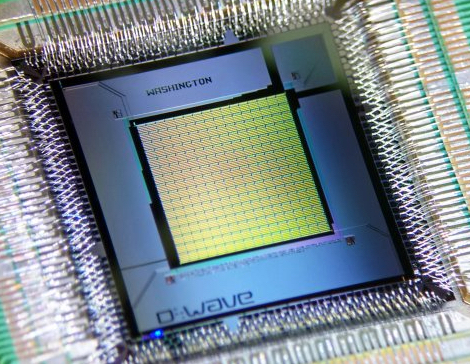D-Wave Systems breaks the 1000 qubit quantum computing barrier
June 26, 2015

(credit: D-Wave Systems)
D-Wave Systems has broken the quantum computing 1000 qubit barrier, developing a processor about double the size of D-Wave’s previous generation, and far exceeding the number of qubits ever developed by D-Wave or any other quantum effort, the announcement said.
It will allow “significantly more complex computational problems to be solved than was possible on any previous quantum computer.”
At 1000 qubits, the new processor considers 21000 possibilities simultaneously, a search space which dwarfs the 2512 possibilities available to the 512-qubit D-Wave Two. ”In fact, the new search space contains far more possibilities than there are particles in the observable universe.”
The new processors, comprising over 128,000 Josephson tunnel junctions, are believed to be the most complex superconductor integrated circuits ever successfully yielded. Other innovations include:
- Lower Operating Temperature: While the previous generation processor ran at a temperature close to absolute zero, the new processor runs 40% colder. The lower operating temperature enhances the importance of quantum effects, which increases the ability to discriminate the best result from a collection of good candidates.
- Reduced Noise: Through a combination of improved design, architectural enhancements and materials changes, noise levels have been reduced by 50% in comparison to the previous generation. The lower noise environment enhances problem-solving performance while boosting reliability and stability.
- Increased Control Circuitry Precision: In the testing to date, the increased precision coupled with the noise reduction has demonstrated improved precision by up to 40%. To accomplish both while also improving manufacturing yield is a significant achievement.
- Advanced Fabrication: The new processors comprise over 128,000 Josephson junctions (tunnel junctions with superconducting electrodes) in a 6-metal layer planar process with 0.25μm features, believed to be the most complex superconductor integrated circuits ever built.
- New Modes of Use: The new technology expands the boundaries of ways to exploit quantum resources. In addition to performing discrete optimization like its predecessor, firmware and software upgrades will make it easier to use the system for sampling applications.